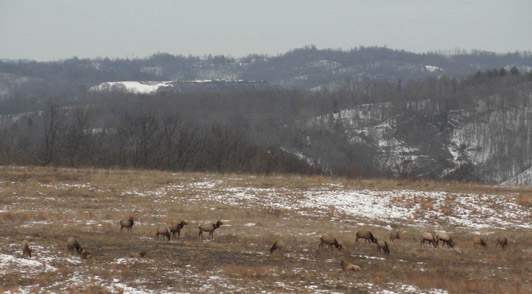Elk, like other wildlife species, are capable of causing damage to property and, in extreme cases, even injure people. Here are a few things you can do to avoid or deal with problem elk:
- NEVER feed elk! Once elk have learned to associate humans with food they can begin to cause property damage in search of food and have been known to become highly aggressive towards humans. In addition, feeding brings elk into closer contact with each other, which can spread disease. For more information please check our Feeding Elk section.
- Even if an elk looks hungry or injured do not feed. To report injured or sick elk, please contact the Marion Regional Office.
- Elk-proof fences do exist, though they are larger than fences developed for deer or cattle. Electric fences are generally less expensive than other types of fencing in the long run, though up-front costs may be higher. The state of Oregon has developed some guides to assist with elk.
- Hazing of elk is often successful, but it must be repeated as new elk move through the area. Hazing, if done well, will drive elk off for as long as a few weeks and is most useful in the short term until more permanent methods can be put into place.
- Hazing should be done as soon as possible after damage begins. Waiting until elk have become accustomed to their new damaging habits makes it harder to induce them to move away.
- Chemical repellents applied to vegetation are sometimes successful at reducing browse damage caused by elk and deer. Most products need to be reapplied soon after initial application and after heavy rains to maintain their effectiveness. Repellents can be purchased from a commercial manufacturer or even made at home – the goal is to make forage unpalatable or access to a site undesirable.
If problems with elk persist, please call the DWR/USDA-WS Wildlife Conflict Helpline at 1-855-571-9003.


